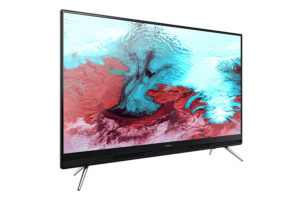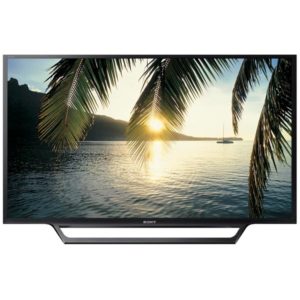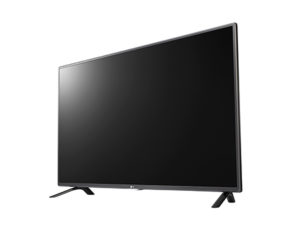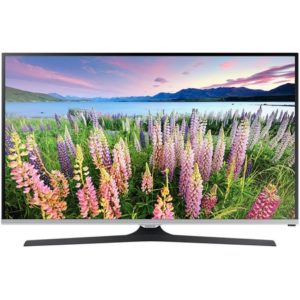 Are the top full hd televisions as good as they are advertised in? Do these devices justify the money spent on their purchase, and how do they differ from ordinary representatives of television receivers? Questions of this nature are quite natural for a buyer who wants to purchase a TV or any device for the home.
Are the top full hd televisions as good as they are advertised in? Do these devices justify the money spent on their purchase, and how do they differ from ordinary representatives of television receivers? Questions of this nature are quite natural for a buyer who wants to purchase a TV or any device for the home.
From time to time, marketers of large manufacturers offer us new equipment innovations with vivid names of the latest technologies or functions. Most of the new features of conventional appliances are a simple technique for attracting customers and a method of increasing the cost of the product. Therefore, before running away and buying a “miracle” of technology after the next advertisement, it is better to look for information about this function or technology. Before buying, it is better to understand what characteristics will be in demand and necessary specifically for you, how much you are willing to pay for this device. To choose a really good TV for your home, we suggest you first understand what hd, full hd technologies are and which TV is better - hd or full hd.
HD and Full HD Concepts
If you go through the department of a household appliance store that sells TVs, or just look at the models in an online store, then among other characteristics you will definitely meet the marking HD or Full HD. Moreover, TVs with a designation
Full HD at a cost, most likely, will cost an order of magnitude more expensive than models with an HD pointer.
Let’s figure out what these symbols mean, how these devices differ from each other.
Let's start with the concept of HD, as it was introduced earlier.
HD, or High Definition Video, literally translates to high definition video or resolution. This is the marketing name of the image parameters, which indicates its resolution, that is, the number of dots or pixels per specific area of the image. The designation for the HD video format has its own size, which is equal to 1280X720 pixels. Simply put, HD is a video image transmission format, the number of image points, which is 1280 vertically and 720 horizontally. If you multiply two numbers, we get the total number of pixels or pixels of the image that is transmitted in this format. 720p image transmission provides good picture quality.
Based on the foregoing, we conclude that devices with the designation HD, among other characteristics, support the reception and transmission of images with a resolution of 1280X720 pixels.
In turn, the Full HD format, or HD1080p, is also a characteristic of resolution, but it has a larger value of the number of dots equal to 1920 × 1080.
The word Full means something whole, filled, enriched. Thus, the designation Full High Definition is understood as the full format of high-definition video.
If we compare the number of pixels in 720p format with their number for 1080p, then the content of pixels in full format exceeds the usual HD720 by almost half. Hence the higher quality of the picture and its detail. 1080p image is clearer, brighter and more contrast. 1080p quality video contains a greater number of small details that are less noticeable at 720p and merge into a uniform background with the SD video format.
The difference between the resolutions is obvious, but it is not only in the number of pixels or points.
In cases where the data has a lower resolution than the specified receiver format:
- devices with 1080p will increase the quality of the picture to the desired extension using a powerful processor and matrix;
- devices with a resolution of 720p play video in the format in which it is transmitted.
In the case when these videos have a higher resolution:
- HD device will compress it to its maximum possible resolution;
- Full HD TVs already have high resolution.
High resolution content sources are:
- satellite, cable or terrestrial television channels;
- Blue Ray systems and drives;
- Video content for Smart TV applications.
Almost all new-generation TVs have built-in matrices that support high quality resolution. Moreover, it can be devices with a screen of any type: both liquid crystal LED, OLED, and plasma. Matrices with a resolution of 1080p, as a rule, are equipped with top models of manufacturers. Such devices have a higher cost due to the expensive processors and matrices required for reproducing high-precision images. We’ll do a short review, which presents the best full hd 2019 TVs.
Best-selling models for the year
When compiling a list of the best TVs, the characteristics of the image were taken as the basis. We took into account customer reviews of devices with the availability of hd1080 resolution without an emphasis on additional functions and capabilities of TVs, that is, devices that have the best image quality in their price segment are included in the rating. Since there are a large number of different models on the market with an extensive set of functions and a wide range of costs, the top full hd televisions are included in the rating, the cost of which does not exceed 35,000 rubles. The choice of the upper limit of value was based on the calculation of the financial capabilities of the average buyer.
- SONY series KDL40RD353. A device with a 40-inch liquid crystal display and a resolution of 1920 × 1080 pixels. The TV is equipped with a parental control function, the ability to play video via USB and a wide range of options for playing content in various formats. Moreover, this model has an intuitive interface for adjusting the image. Thanks to direct LED technology and Full HD resolution, the device reproduces a clear picture of high quality.

- LG Series 42LF560V. TV with forty-two inch LED display. This device has received the title of “Best Full HD 2019 TV” due to its excellent image quality. In addition to all other functions, the representative of this brand is equipped with the Smart TV function, as well as a built-in tuner DVB T2, which allows you to watch broadcast television in high quality without interference. At the same time, there is no need to purchase special expensive equipment, since the built-in tuner works great when connected to a conventional outdoor antenna.

- Samsung model UE40J5100. A device with a forty-inch display equipped with Edge LED, which makes it possible to play video in high quality. Despite the fact that this model does not have the ability to connect Smart TV, thanks to three built-in tuners, the model is able to receive and convert satellite, cable and terrestrial signals to high quality. At the same time, the TV is equipped with the Wide Color function, which extends the color range, which makes the image even more saturated, contrast and bright.

- Philips model 40PFT4100. The forty-inch LED display with a resolution of 1080p supports both the usual 4: 3 image format and the expanded 16: 9 format, while providing excellent image quality. Among the many functions and additional features of this brand’s TV include features such as a pause program, a built-in program update wizard, and an 8-day electronic program guide. In addition, the model supports all video or audio playback formats, as well as a built-in tuner DVB / T / T2 / C.

- Shivaki model STV-40LED14. Perhaps the most budget-friendly version of the number of televisions with Full HD resolution. Such a TV costs about 19,000 rubles. For a small price you get an LED TV with a 40-inch display, while the image quality is no worse than that of eminent representatives of this kind of device. The TV is equipped with a player that is able to "read" all formats, speakers that provide surround sound. This model is ideal for those who want to buy just a TV to watch content in excellent quality without additional features, including Internet access.

In conclusion, a little advice for those who have not yet decided which TV is better to purchase: the choice between HD or Full HD is relevant only for models with a large diagonal. Since with small sizes of displays of devices there is no difference between the resolution of the HD720 or HD1080.The image quality with small sizes will be the same, and the cost of devices can vary significantly. Why pay more?




